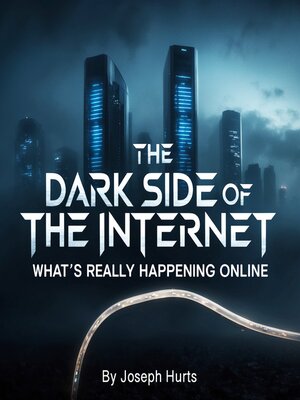The Dark Side of the Internet
audiobook (Unabridged) ∣ What's Really Happening Online
By Joseph Hurts

Sign up to save your library
With an OverDrive account, you can save your favorite libraries for at-a-glance information about availability. Find out more about OverDrive accounts.
Find this title in Libby, the library reading app by OverDrive.



Search for a digital library with this title
Title found at these libraries:
| Library Name | Distance |
|---|---|
| Loading... |
This audiobook is narrated by a digital voice.
Beneath the glossy surface of social media feeds and search results lies a vast infrastructure designed not to inform or connect, but to manipulate and extract. The internet we experience daily is increasingly shaped by algorithms whose primary purpose is not to serve our interests, but to capture and monetize our attention. This fundamental misalignment between user needs and platform incentives has created what researchers call the "attention economy," where human focus becomes the raw material for corporate profit.
The mechanics of this system operate largely invisible to users. When you scroll through your social media feed, sophisticated machine learning algorithms are making hundreds of micro-decisions about what content to show you. These systems have learned that certain types of content generate stronger engagement responses than others. Controversial posts that spark arguments receive more comments. Emotionally charged headlines get more clicks. Content that confirms existing beliefs keeps users scrolling longer than information that challenges their worldview.
Platform algorithms have discovered that negative emotions often drive more engagement than positive ones. Anger, fear, and outrage compel people to share, comment, and remain online longer than contentment or satisfaction. This has created what some researchers term "engagement-driven extremism," where the very architecture of digital platforms systematically amplifies divisive content not because it's true or valuable, but because it generates the behavioral responses that advertising models require.
The personalization systems that promise to show us "relevant" content actually operate by creating detailed behavioral profiles based on our digital footprints. Every click, pause, scroll speed, and time spent viewing content feeds into these profiles.







